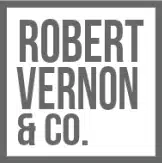Print marketing has been a powerful tool in the advertising industry for decades. In today’s digital age, where online ads and social media campaigns dominate the marketing landscape, print marketing still holds its ground as an effective way to reach and engage consumers. The tactile experience of holding a printed material, whether it’s a brochure, flyer, or magazine, creates a unique connection between the brand and the consumer. This physical interaction triggers a psychological response that influences consumer behavior.
One of the key advantages of print marketing is its ability to create a lasting impression. Unlike online ads that can be easily dismissed with a click, print materials have a physical presence that can linger in the minds of consumers. Research has shown that people have a better memory and emotional connection to printed content compared to digital content. This is because print engages multiple senses, such as touch and sight, which enhances the overall experience and makes the information more memorable. By leveraging the power of print, marketers can tap into the psychology of consumers and influence their decision-making process.
Understanding Consumer Behaviour
To effectively influence consumer behaviour through print marketing, it is crucial to understand the underlying psychological factors that drive consumer decision-making. Consumers are not always rational beings; their decisions are often influenced by emotions, perceptions, and subconscious biases. By understanding these psychological factors, marketers can design print materials that resonate with consumers on a deeper level.
One important aspect of consumer behaviour is the need for social validation. People are more likely to be influenced by the opinions and behaviours of others. This is known as social proof. By incorporating testimonials, reviews, and endorsements in print materials, marketers can tap into this psychological need for social validation. When consumers see that others have had positive experiences with a product or service, they are more likely to trust and engage with the brand.
Another psychological factor that influences consumer behaviour is the fear of missing out (FOMO). Humans have a natural tendency to seek novel experiences and fear being left out. Marketers can tap into this fear by creating a sense of urgency in their print materials. Limited-time offers, exclusive discounts, and time-sensitive promotions can create a sense of scarcity, driving consumers to take immediate action.
The Psychology Behind Design
Design plays a crucial role in print marketing. It is not just about making something visually appealing; it is about strategically using design elements to evoke specific emotions and influence consumer behaviour. The psychology of design is rooted in the understanding of how different visual elements, such as colors, typography, layout, and images, impact our perception and decision-making process.
Color Psychology in Print Marketing
Colors have a profound impact on our emotions and can elicit specific psychological responses. Different colors have different meanings and associations. For example, red is often associated with energy, passion, and urgency, while blue is associated with trust, reliability, and calmness. Marketers can leverage color psychology to create a desired emotional response in consumers. By using the right colors in their print materials, they can evoke specific feelings and influence consumer behavior. For instance, a restaurant might use warm, inviting colors to stimulate appetite and create a welcoming atmosphere.
Typography and Its Impact on Consumer Perception
Typography is not just about choosing the right font; it is about using typography to convey the brand’s personality and message. Different fonts have different connotations and can evoke specific emotions. For example, a bold, sans-serif font can create a sense of strength and reliability, while a script font can evoke elegance and sophistication. By carefully selecting fonts and using typography strategically, marketers can shape consumer perception and enhance the effectiveness of their print materials.
Layout and Organization: Influencing Consumer Decision-Making
The layout and organization of print materials can significantly influence consumer decision-making. Studies have shown that people tend to scan printed content in an F-shaped pattern, starting from the top left corner and moving horizontally. Marketers can utilize this knowledge to strategically place important information, such as headlines, key messages, and calls to action, in the areas where consumers are most likely to focus their attention. By organizing the content in a logical and visually appealing manner, marketers can guide consumers through the material and increase the chances of them taking the desired action.
Using Images and Visuals to Evoke Emotions
Images and visuals are powerful tools in print marketing. They have the ability to evoke emotions and create a strong connection between the brand and the consumer. Studies have shown that people respond more positively to images that depict human faces. By incorporating images of people in their print materials, marketers can create a sense of relatability and emotional connection. Additionally, images that evoke positive emotions, such as happiness, joy, or excitement, can further enhance the effectiveness of print marketing campaigns. By selecting and using images strategically, marketers can tap into the emotional aspect of consumer decision-making and drive desired actions.
The Role of Storytelling in Print Marketing
Storytelling is a fundamental aspect of human communication. It has the power to captivate and engage audiences, making it an essential tool in print marketing. By weaving a compelling narrative into their print materials, marketers can create a memorable and impactful experience for consumers. Through storytelling, marketers can establish an emotional connection, convey the brand’s values, and build trust with the audience. Whether it’s through a captivating headline, an engaging anecdote, or a visual narrative, storytelling can leave a lasting impression and influence consumer behavior.
Conclusion: Leveraging Design to Drive Consumer Action
In conclusion, the psychology of print marketing goes beyond aesthetics; it is about understanding and leveraging the psychological factors that influence consumer behaviour. By strategically incorporating design elements, such as color, typography, layout, images, and storytelling, marketers can create print materials that resonate with consumers on a deeper level. The power of print lies in its ability to create a tactile and memorable experience that influences consumer decision-making. By harnessing the psychology of print design, marketers can drive consumer action and achieve their marketing goals.
Are you ready to harness the power of print marketing? Contact us today to discuss how our design experts can help you create impactful print materials that influence consumer behavior and drive results.

